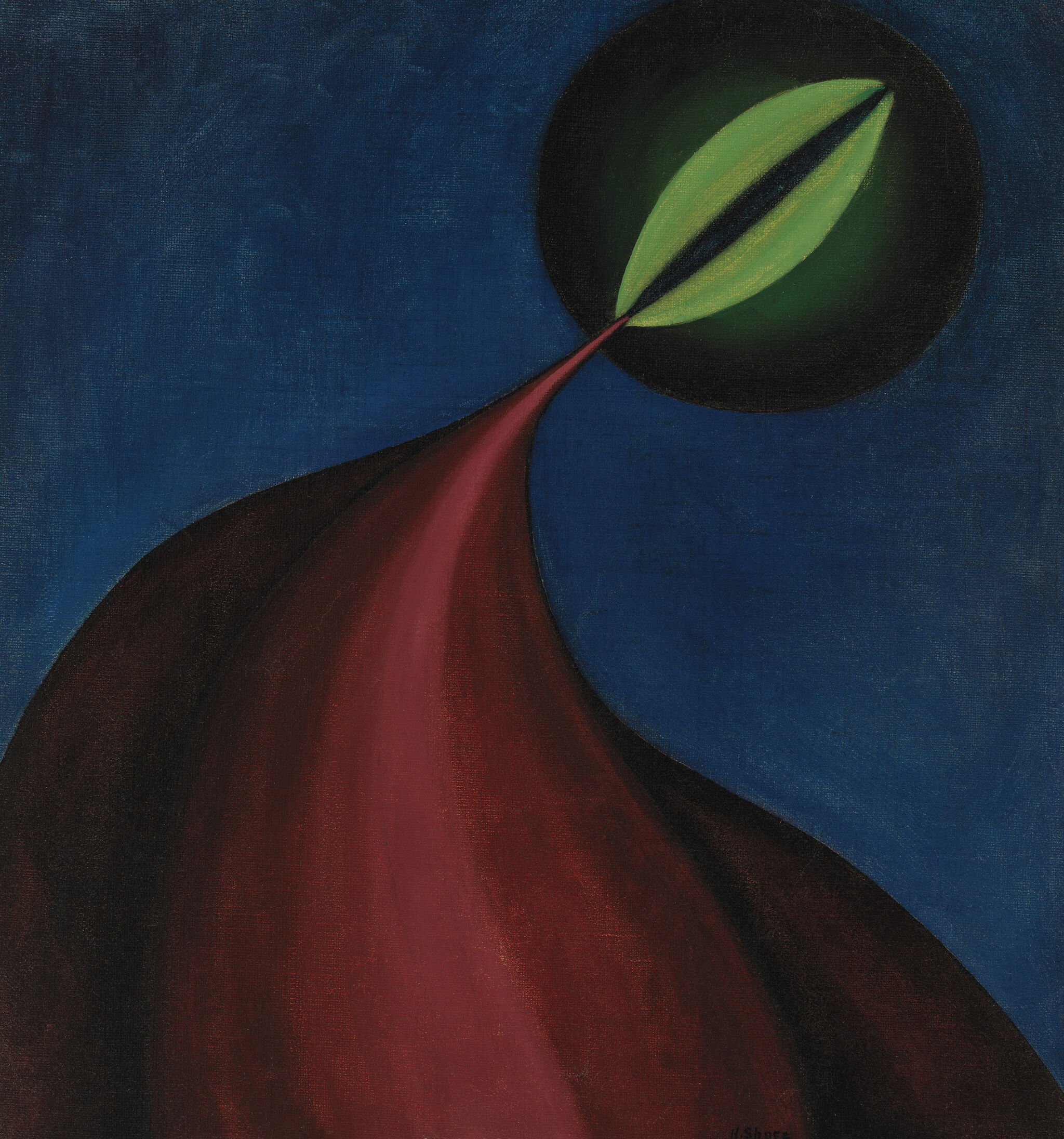At the Dawn of a New Age: Early Twentieth-Century American Modernism | Art & Artists
May 7, 2022–Feb 26, 2023
At the Dawn of a New Age: Early Twentieth-Century American Modernism | Art & Artists
Henrietta Shore
20
Born 1880 in Toronto, Ontario
Died 1963 in San Jose, CA
Canadian-born Henrietta Shore came to New York in 1905 to study with Ashcan leader and influential teacher Robert Henri. She moved to Los Angeles in 1912 but returned frequently to New York. Her knowledge about vanguard art being produced on the East Coast, combined with the modernity of her portraits and genre scenes, made her a key figure in the Los Angeles art scene throughout the 1910s. Back in New York in 1920, Shore radically shifted her style to symbolic, boldly simplified distillations of organic forms. Her use of multiple layers of thin, transparent glazes of color endowed her abstractions with an extraordinary luminosity. The paintings debuted to great acclaim in 1923 in midcareer retrospectives at New York’s Ehrich Gallery and the Worcester Art Museum in Massachusetts. One of her greatest champions was modernist photographer Edward Weston, who credited a 1927 visit to her studio with influencing his subsequent work. After he moved to Carmel, California in 1929, Shore relocated there a year later and soon began transforming the craggy coastline of Point Lobos into anthropomorphic landscapes replete with metaphoric allusions. She remained in Carmel after Weston left in 1934 but found herself increasingly isolated. Shore’s sole income during the 1930s came from New Deal mural commissions, and she stopped painting entirely in 1937.
Trail of Life, c. 1923
Artists
- Richmond Barthé
- Ben Benn
- Albert Bloch
- Oscar Bluemner
- Patrick Henry Bruce
- Charles Burchfield
- Arthur B. Carles
- John Covert
- E.E. Cummings
- Imogen Cunningham
- James Daugherty
- Arthur B. Davies
- Stuart Davis
- Manierre Dawson
- Charles Demuth
- Isami Doi
- Aaron Douglas
- Arthur Dove
- Charles Duncan
- Yun Gee
- Marsden Hartley
- Rebecca Salsbury James
- Loïs Mailou Jones
- Taizo Kato
- Gaston Lachaise
- Blanche Lazzell
- Stanton Macdonald-Wright
- Man Ray
- John Marin
- Elie Nadelman
- Louise Nevelson
- Carl Newman
- Isamu Noguchi
- Chiura Obata
- Georgia O'Keeffe
- Walter Pach
- Agnes Pelton
- Nancy Elizabeth Prophet
- Henry Lyman Sayen
- Charles G. Shaw
- Harry Shigeta
- Henrietta Shore
- Pamela Colman Smith
- Joseph Stella
- Florine Stettheimer
- John Storrs
- Henry Fitch Taylor
- Helen Torr
- Jay Van Everen
- Arthur Edward Waite
- Adele Watson
- Max Weber
- Edith Clifford Williams
- Marguerite Zorach
- William Zorach

